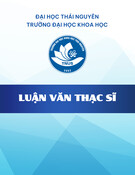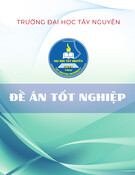
iii
ABSTRACT
Wildfires, or bushfires as they are known in Australia, are a natural occurrence in nearly every
country over the globe, which take place during the hotter months of the year. Wildfires can be
triggered through natural events, such as lightning strikes, which account for half of all wildfires in
Australia, or through human induced methods, for example deliberately lit or through failure of
infrastructure or equipment. In Australia, fires are a major natural hazard affecting over 25,000 km2
of land annually. Historically, fire detection has been performed by fire spotters, usually in towers or
spotter aircraft, but in countries such as Australia, with a large extent of land that needs to be
monitored, leads remote sensing techniques to be the obvious choice in providing resources in
gathering this information when compared to other methods. Remote sensing technologies provide
efficient and economical means of acquiring fire and fire-related information over large areas at
regional to global scale on a routine basis, allowing for the early detection and monitoring of active
fire fronts, which is essential for emergency services in responding timely to outbreaks of wildfires.
The objective of this study is to investigate the hotspot (fires and other thermal anomalies)
detection and characterization product from the TET-1 satellite sensing system from the German
Aerospace Centre (DLR). The satellite is envisioned, as part of a constellation of satellites, to provide
detection and characterization of fires at a higher spatial resolution when compared to the current
standard global coverage from the MODIS fire products. This study aims to validate the output from
the detection and characterization algorithm, to provide a guide for the sensitivity of the system,
especially for low power (small area and low temperature) fires. This consisted of conducting a
simulation study into the limits of detection for the system, as well as performing a case study.
A simulation study was conducted in order to determine the sensitivity of the TET-1 satellite sensing
system in detecting hotspots, for the purpose of determining limits of operation and as an aid in
developing tests to assess the accuracy of the algorithm in detecting and characterizing fires.
Determining the sensitivity involved ascertaining the minimum area and temperatures (in































